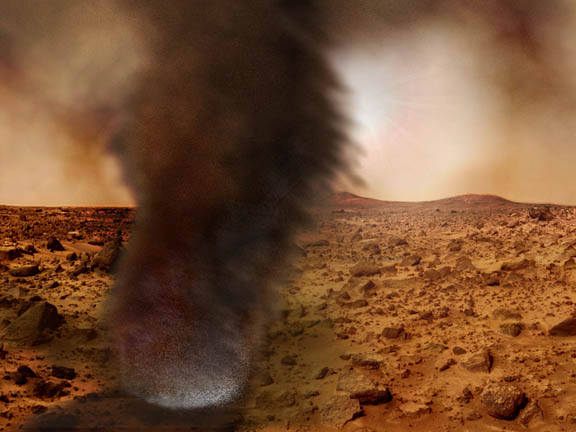[/caption] The first direct evidence of lightning has been detected on Mars. Researchers from the University of Michigan found signs of electrical discharges during dust storms on the red planet using an innovative microwave detector . The bolts were dry lightning, said Professor Chris Ruf. "What we saw on Mars was a series of huge and sudden electrical discharges caused by a large dust storm. Clearly, there was no rain associated with the electrical discharges on Mars. However, the implied possibilities are exciting."
The Space Physics Research Laboratory at the University of Michigan developed the kurtosis detector, which is capable of differentiating between thermal and non-thermal radiation. The device took measurements of microwave emissions from Mars for approximately five hours a day for 12 days between May 22 and June 16, 2006.
On June 8, 2006 both an unusual pattern of non-thermal radiation and an intense Martian dust storm occurred, the only time that non-thermal radiation was detected. Non-thermal radiation would suggest the presence of lightning.
Electric activity in Martian dust storms has important implications for Mars science, the researchers said. "It affects atmospheric chemistry, habitability and preparations for human exploration. It might even have implications for the origin of life, as suggested by experiments in the 1950s," said Professor Nilton Renno of the university's Department of Atmospheric, Oceanic and Space Sciences.
"Mars continues to amaze us," said Michael Sanders, manager of exploration systems and technology at the National Aeronautics and Space Administration's Jet Propulsion Laboratory and a researcher involved in the study. "Every new look at the planet gives us new insights."
The new findings are to appear in an upcoming issue of the journal Geophysical Research Letters.
Source:
University of Michigan
 Universe Today
Universe Today
